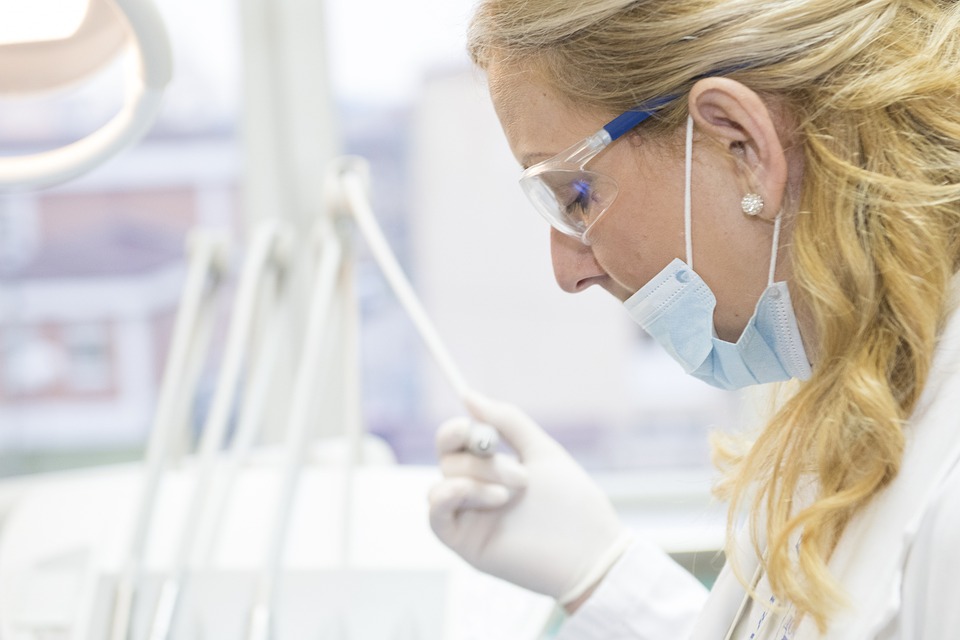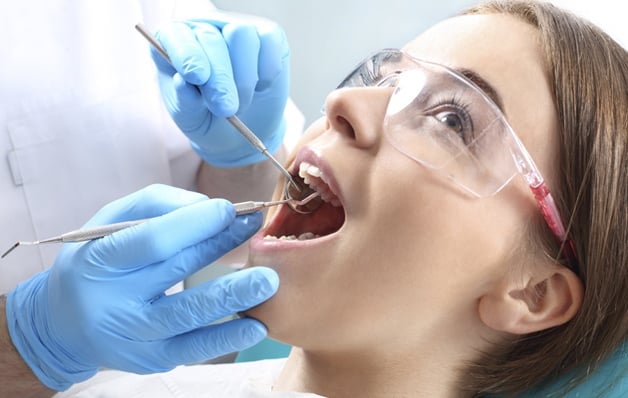
Have you ever wondered why, when you go into the dentist’s office for a routine cleaning, both the dental hygienist and the dentist examine your mouth separately? Couldn’t it just be one or the other?
There are actually two important reasons for this division of labor:
- It allows one dentist to effectively care for multiple patients
- More importantly, it allows the dentist to focus on your overall oral health
The role of the dental hygienist
The routine cleaning performed by a hygienist is an important part of maintaining your oral health, and it lays the groundwork for the dentist examining your mouth. Often, the hygienist is asking questions, taking notes, and making recommendations throughout your cleaning in preparation for the dentist’s portion of the examination.

The dentist and dental hygienist work together to develop a full report on your oral health.
You could illustrate the dynamic by thinking about mechanics at a car repair shop: the routine cleaning handled by the dental hygienist is like the oil changes and tune-ups done at the garage. Then, when a strange or more advanced problem is discovered, an expert is required to diagnose and fix a serious issue.
While your dental hygienist is a highly skilled practitioner who handles cleanings all day, every day, your dentist offers the major line of defense with years of training and experience in diagnosing and treating medical conditions that can present orally.
That’s why the dentist sees every patient who comes in for a cleaning: to ensure that you’re not just getting a thorough cleaning, but that your overall oral health is taken into consideration.
"Often, the hygienist is asking questions, taking notes, and making recommendations throughout your cleaning..."
What is your dentist looking for?
Most dentists perform an examination after your teeth have been cleaned, although this isn’t a requirement. When they do so, they can ensure that the cleaning was thorough and that nothing was overlooked. It also puts them in a better position to do a thorough visual inspection.
At least once a year a full set of x-rays will be taken as well, which the dentist will refer to before and during your examination.
The main things your dentist is looking for are:
- Cavities or weak spots that may soon become cavities
- Inflamed gums or other signs of gingivitis
- Fractures, chips, or other tooth damage
- Unusual looseness in the tooth socket
- A healthy “pocket depth” - the distance between the visible gum line and where the tooth is actually connected to the gum tissue
- Signs of other conditions or potential issues (such as sores, discoloration, foul odor, etc.), which may be directly related to oral health conditions or may be precursors of systemic problems elsewhere in the body
Through examining your x-rays, consulting with the hygienist, conversing with you, and visually inspecting your teeth, your dentist will be in the best position to provide a dental treatment plan that is customized for you.
Next time you go in for your routine dental cleaning and exam, consider preparing a couple of questions to ask your dentist to better understand your oral health. You know the basics now, but you can never know too much about your own health.
Want to learn how to get up to 50% off the cost of a dental cleaning and examination? Our discount dental plan helps you save on dental care easily. See how you can join now for automatic savings.

